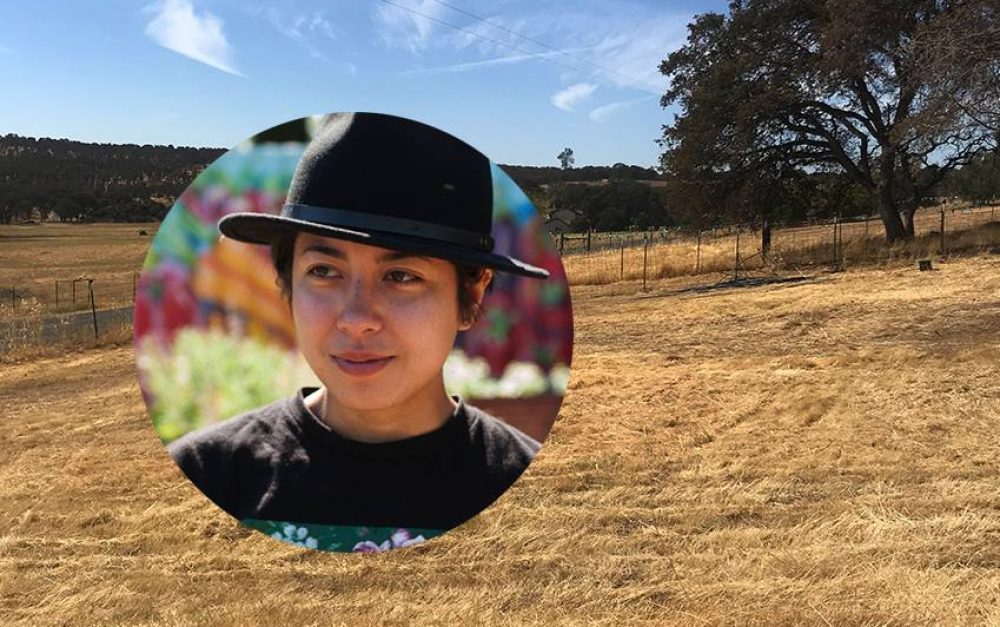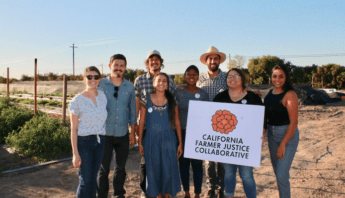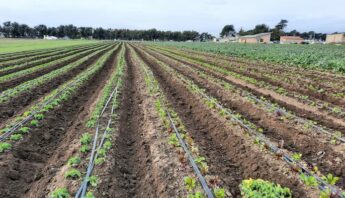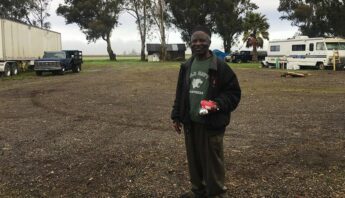Rubie Simonsen is the 28 year old Filipino-American farmer behind First Mother Farms. Her property, located in Yuba County, was inherited by Rubie and her sister after their grandmother’s passing. This beloved and fertile legacy, never having been under agricultural production, will now become a small-scale lavender farm, a healing space of spiritual and intellectual richness, and an embodiment of an accumulation of acquired knowledge, resources, experiences and culture.
This post is part of an ongoing project by PAN Farmer Justice Fellows who are working to uplift the many different voices of farmers in California. The mission of this work is to broaden the narrative of what it means to be a farmer participating in the state’s agricultural system by sharing the wide spectrum of relationships that growers have with land.
Rubie Simonsen is the 28 year old Filipino-American farmer behind First Mother Farms. Her property, located in Yuba County, was inherited by Rubie and her sister after their grandmother’s passing. This beloved and fertile legacy, never having been under agricultural production, will now become a small-scale lavender farm, a healing space of spiritual and intellectual richness, and an embodiment of an accumulation of acquired knowledge, resources, experiences and culture.
As a child spending summers on an Idaho ranch, Rubie remembers playing with and discovering the use of herbs through tinctures and potions. This joyful time in her youth inspired her to invest her energies into First Mother Farms.
Farmers helping one another
Aside from her early exposure to gardening Rubie has also participated in more formal training and farming networks. The farmer training program with Center for Land Based Learning (CLBL) supported Rubie with resources as a beginning farmer — complementing and reframing familiar concepts with more concrete, academic, and economic orientations, scaling the concept of organic farming, and bridging wellness with business logistics.
After finishing the program, CLBL, along with peers from respective incubator farms, became a reliable resource for general farming advice. Rubie is also a member of several other communities and networks that assist in her farming needs, such as the small business development center in Marysville — offering assistance with scalability, distribution and accounting — cooperative extension specialty staff, and the Sacramento Library of Things for tool lending.
Room for more support
Open to exploring supplemental farm support and partnerships, Rubie is aware of the boost of that grants could provide her farm. However, she shares that:
Applying for grants you feel like you’re not even going to receive anyways is not always a smart way to extract all of your time… especially as a new farm, it takes away from getting your operations organized.
This insight sheds light on often complicated and laborious grant application processes. If organized more efficiently, concisely, and with culturally-appropriate backing from technical assistance providers like University of California Cooperative Extension agents, local nonprofits and resource conservation districts, these grants could be accessed by lower resource and non-native English speakers, and kickstart operations for beginning farmers who already face economic burdens.
In Rubie’s case, she could potentially receive assistance with transitioning her operation towards regenerative farming, a climate smart agriculture methodology that she is interested in pursuing. As a farmer of color, her chances of being awarded this aid could be increased if the application took extra consideration for “socially disadvantaged farmers,” as defined by the Farmer Equity Act. Incorporating this policy would recognize that farmers of color have been historically denied access to this type of government assistance, a fact already recognized in California law. The policy addresses historic wrongdoings and their inequitable legacies, and moves toward taking responsibility for leftover systemic power imbalances.
A mosaic of California farmers
Rubie is a part of a diverse generation reconnecting with the land. Her presence diversifies the farmer justice narrative, which often perpetuates the idea that farmers of color have no land or resources. Some may see Rubie’s case as a success story that negates inequitable legacies in agriculture, as she has the privilege of inherited land, along with an educational and formal farming training. But the racial, ethnic, and generational implications layered on top of her reality are still real intersections that come into play when considering her relationship with farming. Thinking out loud, she shares:
As a woman of color, I’m often the only one in the room [of the farmer support spaces listed above] that looks like me. There’s an empowerment piece by knowing that there are other farmers that are like me that are having similar challenges, even though I don’t see them on a regular basis… I’m going to be more comfortable reaching out to other farmers of color.
Already affiliated with various California Farmer Justice Collaborative events and components, Rubie is just one of the many farmers connected to building farmer equity. State agencies like the CA Department of Food and Agriculture, and other relevant environmental stakeholders, have a duty to encourage the work of farmers like her, and to piece together gaps in assistance needed for farmers of color to thrive.







